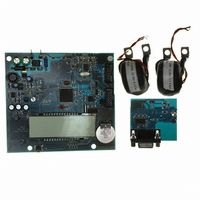STEVAL-IPE009V1 STMicroelectronics, STEVAL-IPE009V1 Datasheet - Page 22

STEVAL-IPE009V1
Manufacturer Part Number
STEVAL-IPE009V1
Description
BOARD EVAL ST72321BR9/STPM14
Manufacturer
STMicroelectronics
Type
Other Power Managementr
Specifications of STEVAL-IPE009V1
Main Purpose
Power Management, Energy/Power Meter
Embedded
Yes, MCU, 8-Bit
Utilized Ic / Part
STPM14, ST72F321BR9T6
Primary Attributes
1-Ph 220 VAC, LCD Displays: No-Load, Reverse, Fraud, or Case Tampering
Secondary Attributes
Up to 4 Tariff Rates, Data Accumulated for Meter Life, Time Stamp for: Tamper, Fraud, Power Failure
Input Voltage
220 V
Product
Power Management Modules
Silicon Manufacturer
ST Micro
Silicon Core Number
ST72321BR9 And STPM14
Features
Continuously Detects, Displays No-Load Condition, Reverse Direction, Fraud And Case Tamper Condition
Lead Free Status / RoHS Status
Lead free / RoHS Compliant
For Use With/related Products
STPM14, ST72321BR9
Other names
497-8434
STEVAL-IPE009V1
STEVAL-IPE009V1
Theory of operation
Figure 17. Tamper conditions
22/46
periods of line voltage when the current of secondary channel is used instead. Four periods
before the primary to secondary switching point, a tamper detection module is activated. It is
deactivated after eight periods of line have elapsed. This means that energy of four periods
of primary channel immediately followed by energy of four periods of secondary channel is
sampled within the tamper module. We shall call those samples A and B respectively. From
these two samples the criteria of tamper detection is calculated. If four consecutive new
results of criteria happen, i.e. after elapsed 5.12s at 50 Hz, the meter will enter into tamper
state.
Tamper state
Within this state the multiplex ratio will change either to 60:4, when primary current is higher
than secondary, or to 4:60 otherwise. Thus, the channel with the higher current is used in
the energy calculation. The energy is not averaged by the mentioned ratio, rather the last
measured higher current is used also during 4 line period gap. The gap is still needed in
order to monitor the samples of the non-selected channel, which should check when the
tamper detected state is changed to either normal or another tamper detected state.
Several cases of transition of the state are shown in the
The detected tamper condition is stored in the BIT signal. This signal is connected to the
SDA-TD pin. When this pin is low, a tamper condition has been detected.
Doc ID 13167 Rev 7
STPM11, STPM12, STPM13, STPM14
Figure 17
- below




















